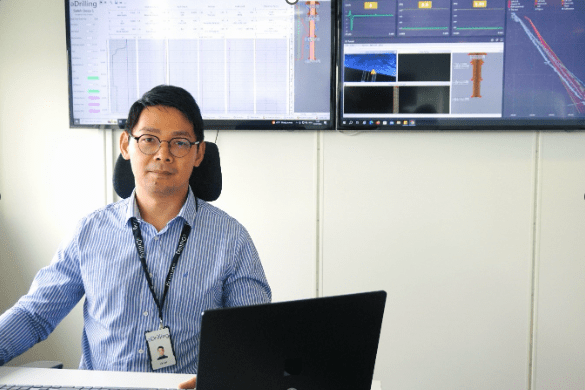
In a few words, what is carbon capture and storage (CCS)?
CCS are a series of technologies that have accomplished to safely capture and store carbon dioxide (CO₂) emissions from industrial activities into deep underground layers, usually where deposits of oil and natural gas are also found.
Why is CCS important?
CO₂ over accumulation in the atmosphere is the main cause of climate change, which is predicted to cause serious social and environmental issues if no actions are taken now. Storing CO₂ from industrial activities underground prevents its accumulation in the atmosphere, and that is how CCS supports climate change mitigation.
How did CCS start?
The first CCS operations began in 1996 in Norway with the Sleipner project run by the energy company Equinor. Since then, CO₂ emissions from oil and gas offshore extraction has been captured and injected into a deep saline formation under the North Sea for permanent storage. This deposit alone has managed to store more than 20 million tonnes of CO₂ to this day.
How is it going?
Sleipner project has become the practical example that CCS technologies can be safe and effective. In addition to becoming the main data source of most CCS studies worldwide, Sleipner's success inspired the launch of the Langskip project by the Norwegian government, as well as the creation of diverse public agencies, such as Gassnova and CLIMIT, to support the development of a large-scale business model that can supply CCS services across Europe.
According to the Global CCS Institute, nowadays there are 26 commercial CO₂ storage facilities in operation globally with a total storage capacity of around 40 million tonnes per year.
Is it safe to store all that CO₂ underground?
Sleipner and other projects’ decades of practical experience, together with many scientific studies have been vital for the development and implementation of CCS technologies across the world in a safe manner.
Nowadays there are monitoring technologies that can measure and verify injected CO2 in the subsurface, however, there are still knowledge gaps that need to be properly addressed within well control for drilling into new CO₂ storage reservoirs across the globe to properly avoid leakage risks.
How can software play a part in the success of CCS?
Full-scale CO₂ storage demands comprehensive analysis and knowledge of reservoir and formation to eliminate risks for leakage underground. Well control technology for CCS addresses these risks for safe, efficient, and controlled in-fill drilling in mature CO₂ storage.
With knowledge gaps in today’s market to provide well control for drilling into CO₂ storage reservoirs, we are proud to be part of Project Green Light, where we together with Equinor, Shell, among others, are developing software enabling safe drilling where a CO2 plume may infer with well construction. Our objective is to deliver a comprehensive software product giving the green light on drilling into underground storage.
What's next? Who should take responsibility for CCS in the years to come?
CCS is an important and widely recognized piece of the puzzle to fight against climate change, and we support all efforts implementing and scaling these technologies as quickly as possible.
Now, who should take responsibility for its implementation? We believe in the power of commitment and cooperation! Public and private single and joint efforts within the energy sector are required; from R&I investments to its direct implementation wherever there is a need for it.
We, as part of the energy sector, believe in our historical responsibility to act within our field for the implementation of the necessary strategies to accomplish our sector's climate goals and overall sustainability.

